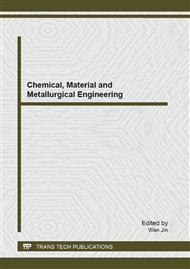p.28
p.31
p.35
p.40
p.45
p.49
p.53
p.58
p.62
Glyphosate Wastewater Treatment by Combined Precipitation and Advanced Oxidation Processes
Abstract:
Phosphorus is one of the main pollutants in glyphosate wastewater. In order to remove the phosphorus in the effluent, two units including CaO precipitation and advanced oxidation processes (AOPs) were used to degrade inorganic phosphate and organic phosphorus in the wastewater. It is found that in the precipitation process the removal rate of TP is 79% when 1g CaO is added to 100ml glyphosate wastewater, while the removal rate of TP is almost 99% when advanced oxidation processes are implemented after the second disposal unit.
Info:
Periodical:
Pages:
45-48
Citation:
Online since:
August 2013
Authors:
Price:
Сopyright:
© 2013 Trans Tech Publications Ltd. All Rights Reserved
Share:
Citation:


